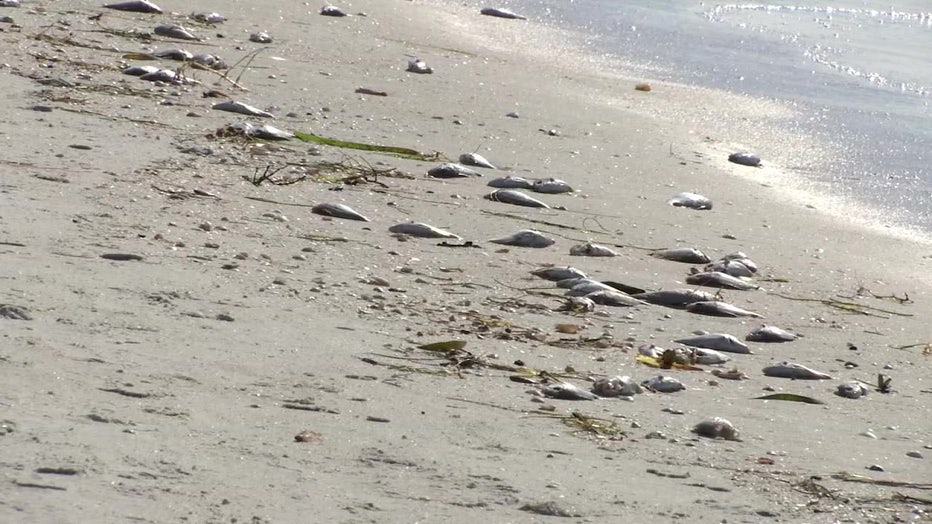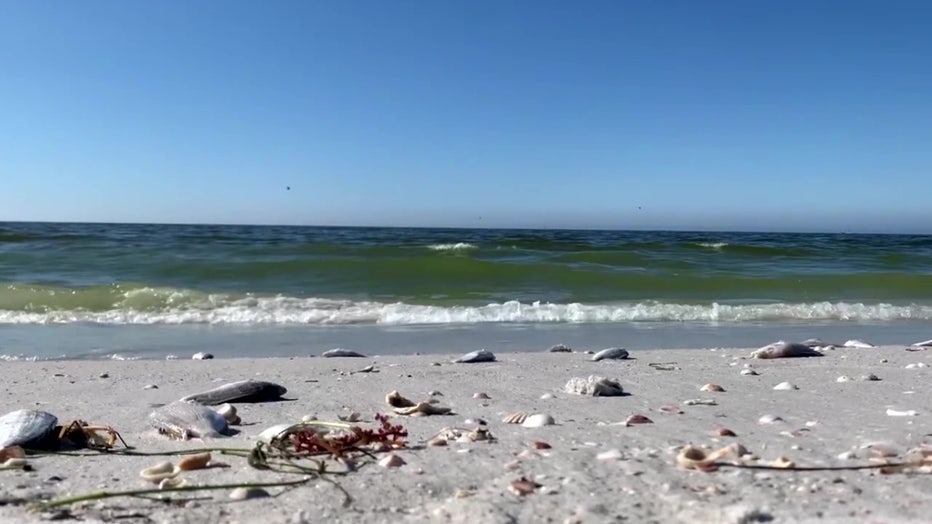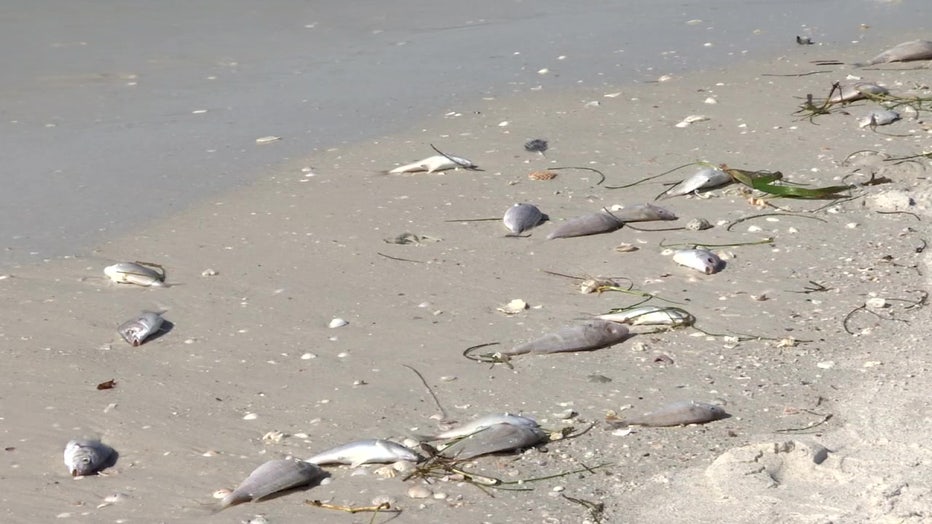Pinellas County ups red tide response with high concentrations found on beaches

Red tide respiratory warning
The Pinellas County Health Department is warning people not to go to the beach due to red tide.
ST. PETERSBURG, Fla. - The Pinellas County Health Department issued a health alert Friday for the beaches, because of red tide. Samples from the county Thursday found high concentrations of the red tide organism, karenia brevis, at Pass-a-Grille and on Treasure Island.
A county spokesperson said they also found low concentrations at Fort De Soto Park, and very low concentrations at Indian Rocks, Redington Shores and Madeira Beach.

Dead fish lined the shore in Pass-a-Grille Friday, and you could feel a tingling in your throat as soon as you stepped outside. Several people were coughing on the beach too.
RELATED: Red tide triggers respiratory warning in Pinellas, Manatee and Sarasota counties
Beachgoer Sharon Greenfield was using a scarf as a mask on the beach because of the smell. The smell and symptoms didn’t stop beachgoers, like Greenfield, whose family is visiting from Tennessee.
"We decided we’d weather it, red tide or no," she said. "We love the beach plain and simple. Sun, sand and water…can’t beat it."

A county spokesperson said they’re implementing phase one of its red tide response plan, which includes making sure they can stage equipment in case they need to start cleanup operations. They’re working with the Pinellas County Sheriff’s Office to schedule flights to monitor fish kills and coordinating with the Florida Fish and Wildlife Conservation Commission to harvest dead fish if needed.
MORE: Florida Aquarium, Ocean Conservancy team up to talk about solutions to red tide
They’re also bringing back a red tide resource page that includes a combined county and FWC GIS monitoring results map. A research scientist with FWC said the red tide in Pinellas County is a direct result of it moving north from Sarasota.

Respiratory risk rising due to red tide across three Bay Area counties
A red tide advisory has been issued across Pinellas, Manatee and Sarasota counties with officials warning beachgoers due to an increased risk of respiratory irritation.
"We’ve seen that patch intensify," Kate Hubbard, a research scientist with FWC, said. "It was further south, and we’ve seen it move further north and at the same time intensify off of the Tampa Bay region and even a little bit further north we are seeing that patch extend roughly up around the Clearwater area, although it’s still offshore there."
She said the bad news is, it’s hard to predict how long red tide will stick around.
PREVIOUS: Low red tide amounts detected near Fort De Soto Park, state officials say

"It depends on a number of factors: Cold fronts, they often change the atmospheric circulation, which then impacts what’s going on in the ocean," Hubbard said. "It’s sometimes those can actually push the blooms further south."
The Pinellas County Health Department said red tide can cause mild respiratory symptoms like a cough, or a runny nose. If you have breathing problems, they said it’s best to avoid the beach. If you start experiencing these symptoms, go into air conditioning, they said.

They also said you shouldn’t swim around dead fish, and they urge you to keep your pets away from the water.
FWC also found high concentrations of red tide near Maximo Park in Pinellas County. Hubbard said they’ll continue to sample and use satellite data to keep an eye on red tide. County officials said they’re going to start monitoring sampling Monday, Wednesday and Friday starting next week. They usually sample two to three times per week.
Hubbard said if you see dead fish in the water or on the beach, call FWC’s hotline to report it at 800-636-0511.

